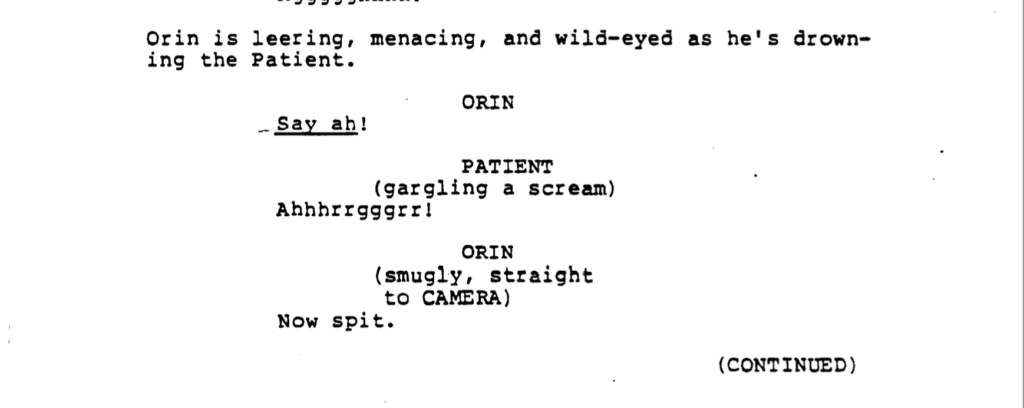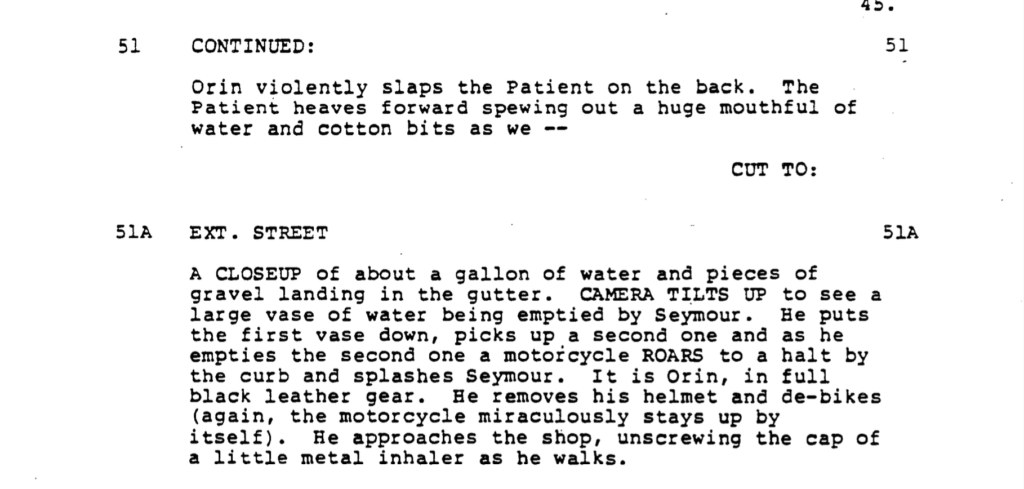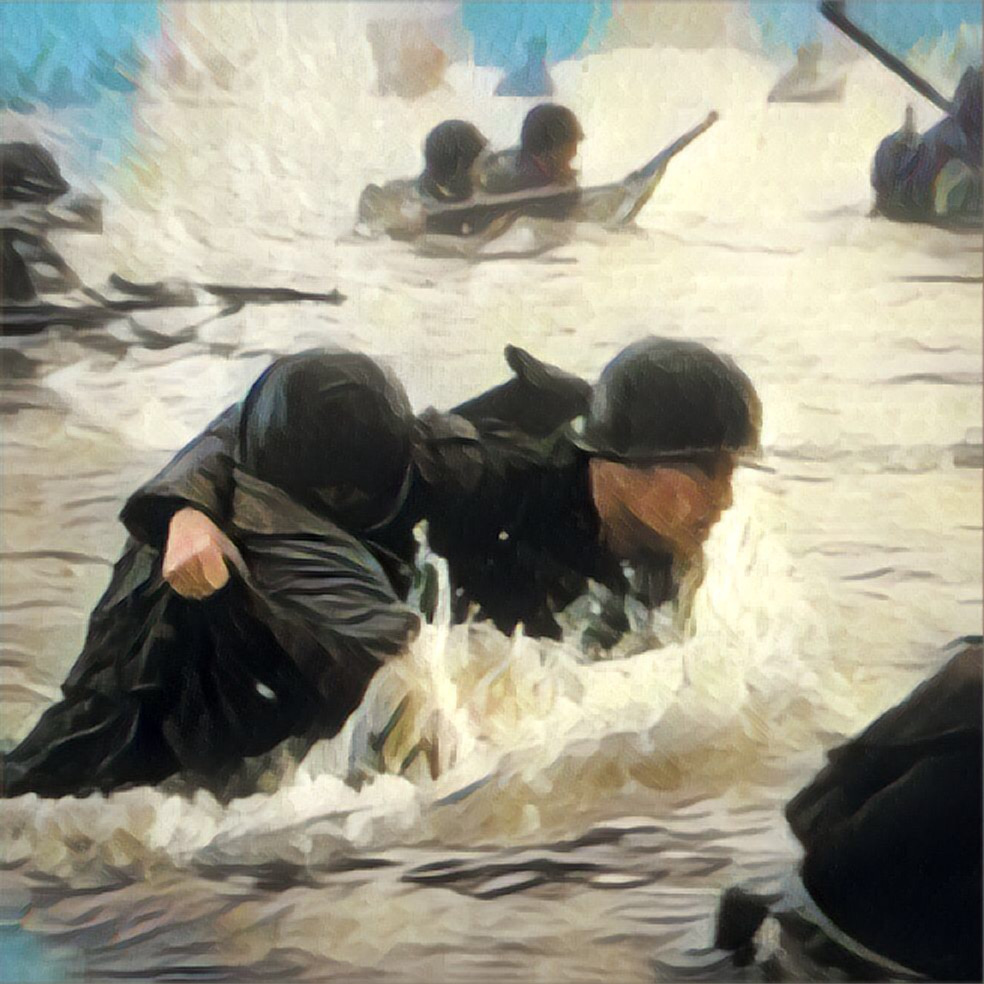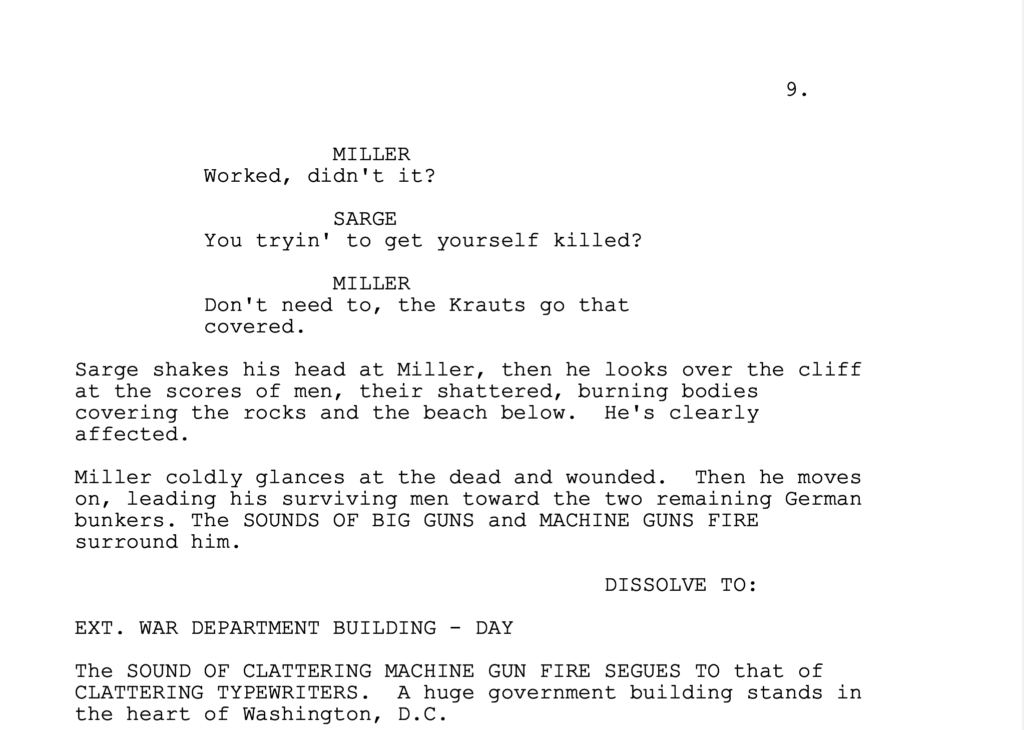No.
Whenever you write a new scene with a new slugline, it’s self-evident that a cut has been made; in most cases, “Cut To” is redundant.
So when would a direction like that be relevant?
As per Dave Trottier’s indispensible The Screenwriter’s Bible (p. 286),
Here’s my rule of thumb: Use an editing direction when it is absolutely necessary to understand the story, or when its use helps link two scenes in a way that creates humor or drama, or improves continuity.
Let’s Look at Little Shop of Horrors:
In this scene, the maniacal dentist Orin demands that his patient spits out water, followed by a visual of a gallon of water and pieces of gravel landing in the gutter.


In this scene, the maniacal dentist Orin demands that his patient spits out water; the closeup of the gallon of water and pieces of gravel landing in the gutter presents a funny juxtaposition; without the “Cut To,” the reader may fail to make the clever visual connection.
Let’s Look at Saving Private Ryan:


Here, the “Dissolve To” bridges the gap between violence of the guns firing to the mundanity of the typewriters clattering.
In sum, a “Cut To,” “Dissolve To,” “Match Cut” are not crucial for screenwriters to integrate into their scripts.

